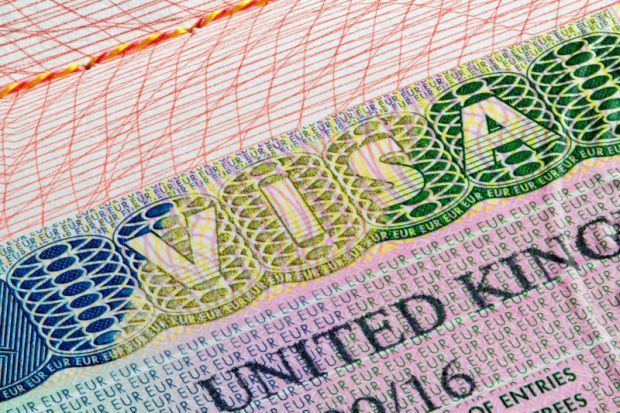
To retain the benefits of an international student body, including the economic contribution, it is important that students, universities and employers are all aware of the routes through which individuals can remain in the UK after their studies have concluded.
The Tier 4 visa is intended for the purpose of studying in the UK. However, it does allow students to work 20 hours a week during term-time or full-time outside term-time, where the student is studying at degree level or above. Such work experience can be vital for those looking to build relationships and contacts in order to secure permanent employment in the UK in the future.
There are a number of options available to Tier 4 students to allow them to stay in (or return to) the UK after their studies. Which route is the most appropriate depends on the individual’s plans for their future in the UK, the area in which they are seeking employment and their current circumstances.
Employment
The main visa for employment is the Tier 2 general visa. This visa requires an employer to hold a sponsor licence and for them to have available a job that the government deems to be at graduate level, or above. Furthermore, the role must be paid at, or above, the stipulated minimum, which is at least £20,800 for students switching to a Tier 2 visa.
International students have several advantages under this route compared with individuals outside the UK. First, businesses do not have to advertise the role in the UK for 28 days prior to offering it to the student (the resident labour market test). Also, businesses do not have to pay the immigration skills charge to employ someone switching from Tier 4 to Tier 2. The current charge is £1,000 for each year of the visa and the cost is likely to rise to £2,000 a year.
Despite such benefits and the clear skills shortages in some sectors, many students find it hard to obtain sponsorship, either because employers are not aware of how to go about sponsoring an individual, or because they believe that the costs and complications of sponsorship are too great for their business.
Previously, it was necessary to pass a course before Tier 4 students could switch to Tier 2, putting graduate schemes that typically start in September out of reach for master’s students, who do not receive their results until later in the year. However, from 11 January 2018, a student has been able to switch to a Tier 4 visa after completing their course.
It is vital for international students to understand the Tier 2 system early on in their course so that they can look for employment and make use of their ability to work under the Tier 4 visa. Armed with knowledge about how they may be sponsored, students can have discussions with employers and potential employers well in advance of the end of their course.
Other options
The two main alternatives for students are the Tier 1 and Tier 5 visas. Tier 1 is for individuals the government is specifically looking to attract to the UK such as investors, entrepreneurs and people who are experts in their field. There are a number of different Tier 1 visa options and it generally encompasses those who have an exceptional talent, or individuals who have money to invest in a business in the UK.
The Tier 1 route can lead to settlement but it does have a high threshold for approval. For example, Exceptional Talent applicants have to be endorsed as an exceptional talent in their field by an official body in their area of expertise. Students who wish to switch from Tier 2 to Tier 1 entrepreneur visas, are limited to using only specific government-backed investment funds, rather than private funds. Students can, however, make a business case to their university to seek endorsement for a Tier 1 graduate entrepreneur visa.
If a student does want to go down the more entrepreneurial route, they should take advice on the conditions of both the initial visa application and any extension application, and how this could lead to settlement.
Tier 5 is a temporary working category and generally requires a student to return to their home country before applying via this route. While Tier 5 is limited in both length and the ability to switch, it can be a useful fallback for a student seeking to build a relationship with an employer in the hope of a future Tier 2 sponsorship. Tier 5 visa holders would have to return to their home country to make a Tier 2 application and this would therefore require the employer to undertake the resident labour market test and pay the higher minimum salary as well as the immigration skills charge.
Future changes
With Brexit on the horizon, the future of the UK’s immigration system is unclear. The government has recently made a commitment to attracting individuals under the Tier 1 Exceptional Talent visa by doubling the number of endorsements that are available in a year. This shows that the post-Brexit environment is intended to be one in which the UK seeks to snap up talent from across the globe.
However, there is a great deal of uncertainty as to what will happen to the highly skilled Tier 2 visa, or whether a lower-skilled worker route will be opened to deal with a possible labour gap in jobs routinely filled by European Economic Area (EEA) workers.
The Migrant Advisory Committee has been commissioned to advise on the economic and social impacts of the UK’s exit from the European Union, and also on how the UK’s immigration system should be aligned with a modern industrial strategy. The report is not due for publication until September 2018, meaning that any changes to our immigration system would need to be quickly drafted and enshrined in law before the UK’s exit from the EU in March 2019. If this isn’t achieved, the current system could continue post-Brexit, which risks it being unfit for its new purpose.
Whatever the future holds, international students form an important part of the economic landscape of the UK and, as such, everyone should be aware of the specific challenges that they face and consider how these may be tackled.
Charlotte Ashton is a solicitor at MLP Law and advises international students from local universities on their options for remaining in the UK.
























Have your say